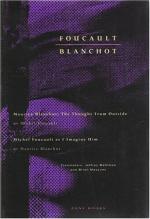|
This section contains 838 words (approx. 3 pages at 300 words per page) |

|
SOURCE: “Blanchot and the New French Criticism,” in Sewanee Review, Vol. CIV, No. 2, Spring, 1996, pp. xxxvii-xxxix.
In the following review, Fowlie comments on the literary and historical significance of the essays in The Work of Fire.
The goals of the new French criticism, in which Maurice Blanchot holds his place beside Derrida, Foucault, Bachelard, Starobinski, and Jean-Pierre Richard, seem very complex. Such criticism may entail more than the analysis of a sonnet or even of a novel: it may be involved with the understanding of the entire experience of an author seen in the light of all his writing, and it may even attempt to illuminate the entire age in which the author lived. Blanchot’s study Lautréamont et Sade, like Sartre’s long analysis of Genet, is a work of criticism in which the critic’s aims are multiple.
Blanchot (born in 1907) was first read in...
|
This section contains 838 words (approx. 3 pages at 300 words per page) |

|


